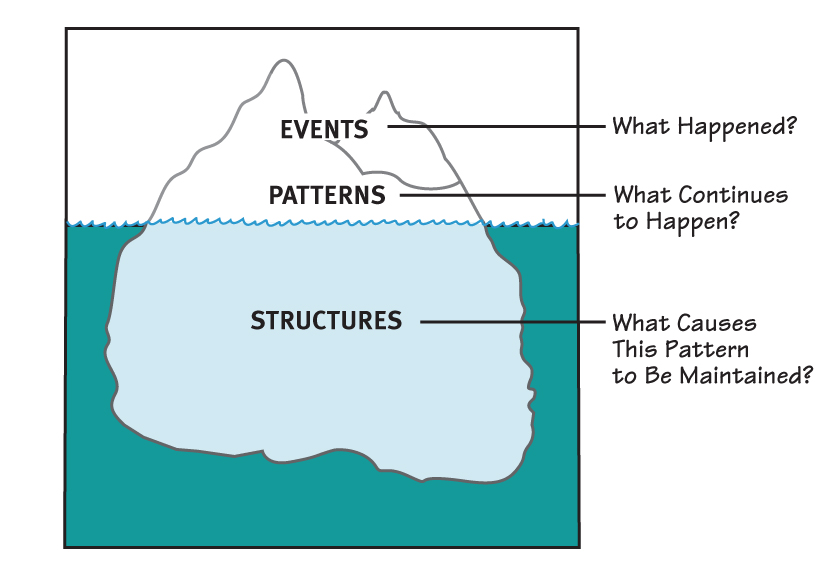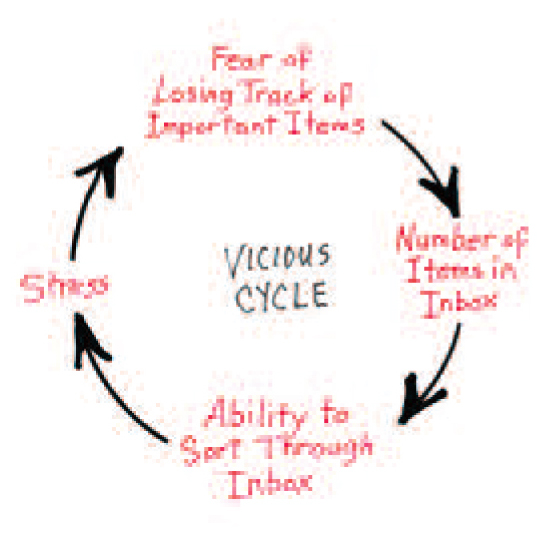Have you resolved to make any changes in 2010? According to RichardWiseman, a psychologist at the University of Hertfordshire, most of us won’t achieve the goals we set on January 1. He and his team found that only 12 percent of the 700 people they polled fulfilled their NewYear’s resolutions.
Maybe part of the challenge lies in the concept of “resolution.” Flipping through MerriamWebster’s Collegiate Dictionary, I was surprised to see that the first current definition of “resolve” is “a: break up, separate” and “b: to reduce by analysis (~the problem into simple elements).” Not until the fifth definition did I find “to reach a firm decision about (~to get more sleep).” Followers of the late Russ Ackoff know that phrases such as “reduce by analysis” are red flags, signaling a potentially nonsystemic approach to problem solving.
In a recent post on his Idea Architects blog, Jeffrey Cufaude questioned our usual methods for trying to address enduring challenges. He wrote, “If you find yourself, either individually or organizationally, looking to re-solve the same issue repeatedly, you may need to direct your attention deeper. You likely need to think more systemically about why this same issue recurs. What beliefs, mindsets, policies, procedures, or practices help perpetuate the same behaviors or outcomes, the ones you want to change?”
VICIOUS CYCLES

With these perspectives in mind, I looked at one of my own longstanding resolutions: clearing out my email Inbox. By directing my attention deeper, can I “re-solve” the challenge once and for all? I turned to the systems thinking tool known as the “iceberg” for guidance.
Events, Patterns, Structure
Most change efforts focus on the event level. To address my overcrowded Inbox, I created a folder called “Old Inbox,” moved my backlog of emails there, and mentally committed to emptying my current Inbox each day. Problem solved, right?
Not exactly. I have done the same thing several years in a row. Clearly, a pattern has emerged, in that my determination to behave differently hasn’t stuck. As I recall from past years, for several days, I duly deleted emails as I dealt with them and filed those I needed for future reference. But, over time, the number of unsorted emails accumulated, until my clean Inbox was a distant memory.
Whenever we think we’ve addressed a problem only to have it recur again, we can be sure that it’s a structural issue. As Jeffrey Cufaude suggested, I needed to look at the beliefs, mindsets, policies, procedures, and practices that have undercut my efforts time and again.

When I reflected on my email practices in greater detail—including the thoughts and feelings that influence my actions—I realized that I experience what productivity expert David Allen calls the “out-of-sight-out-of-mind syndrome.” As shown in this loop, because of my fear of losing track of important items, I allow emails to accumulate in my Inbox. The growing number of emails reduces my ability to easily sort through them, which increases my stress and, in turn, my fear of misplacing something important.
Breaking the Vicious Cycle
The key, I decided, is to put systems in place to alleviate the fear and thus break the vicious cycle. The first thing I did was to experiment with a free, online to-do list (I use TeuxDeux; I’m sure there are others available). If an email includes a task I need to complete, I enter it on the list and move the email to a folder. Somehow, I feel more confident having the list online than in my planner.
Next, I followed a tip by David Allen. I created two folders that reside at the top of my email folder list: @Action and @Waiting For. Of course, I need to actively manage the content of these folders; otherwise, they’ll become just as clogged as my Inbox used to be.
Will these actions be enough to change the underlying structure that influences my email habits? Time will tell, but so far, so good. Now about that exercise regimen …
Janice Molloy is managing editor of The Systems Thinker.
